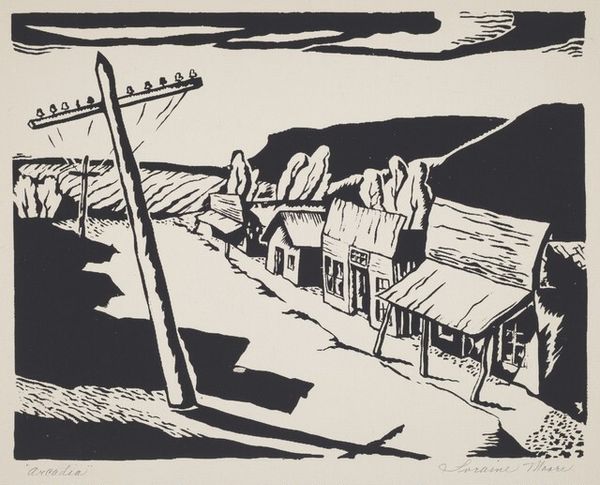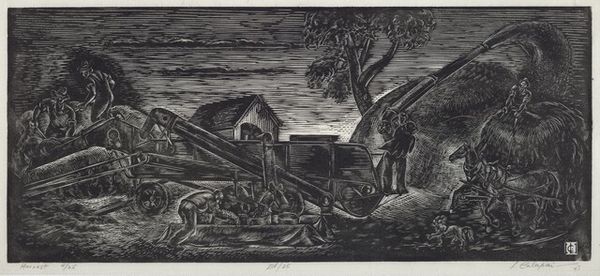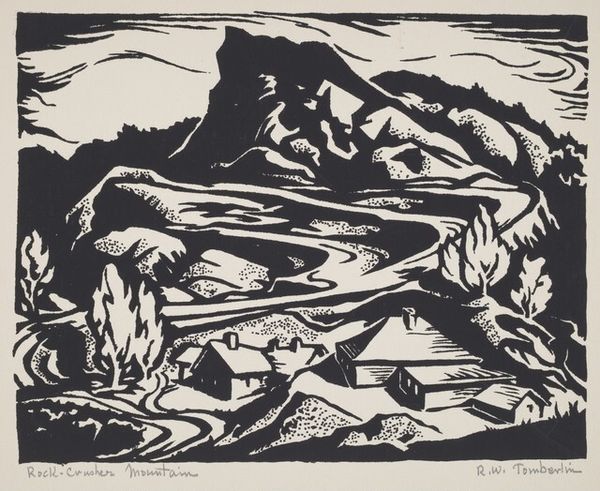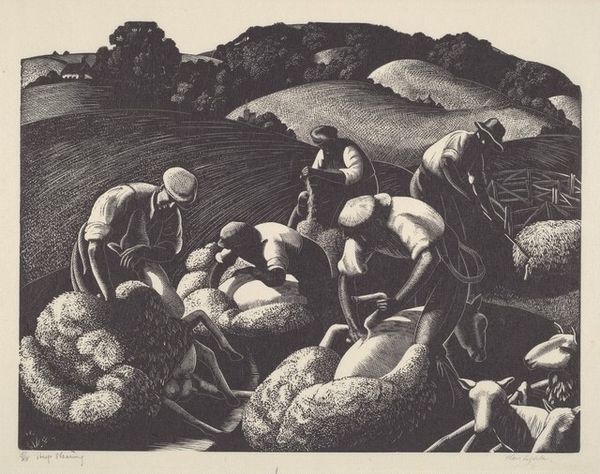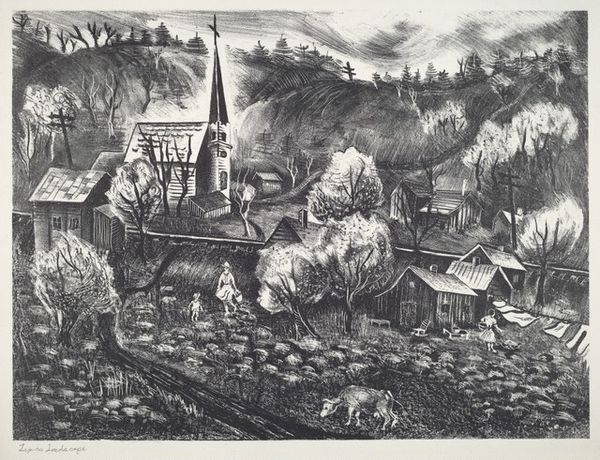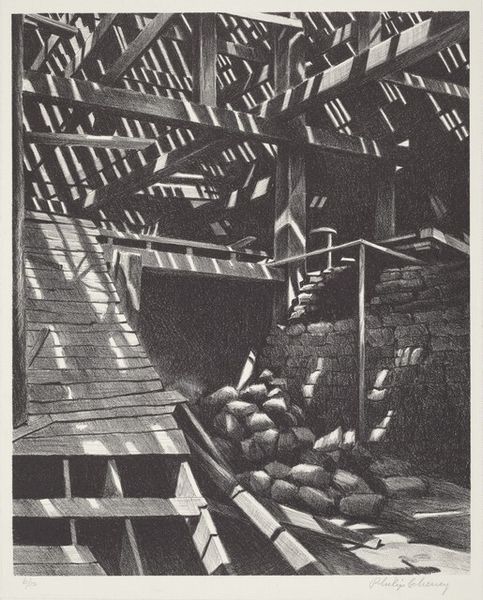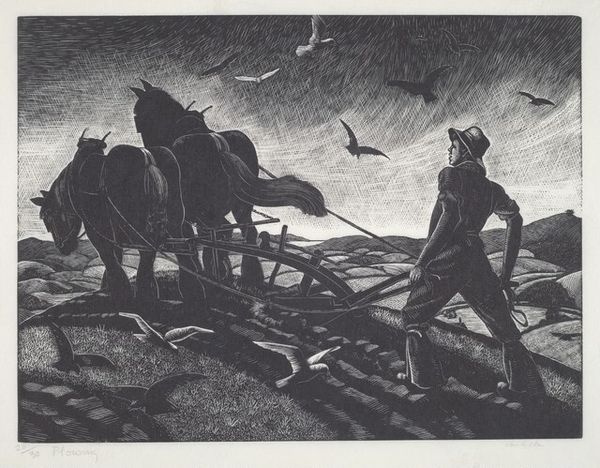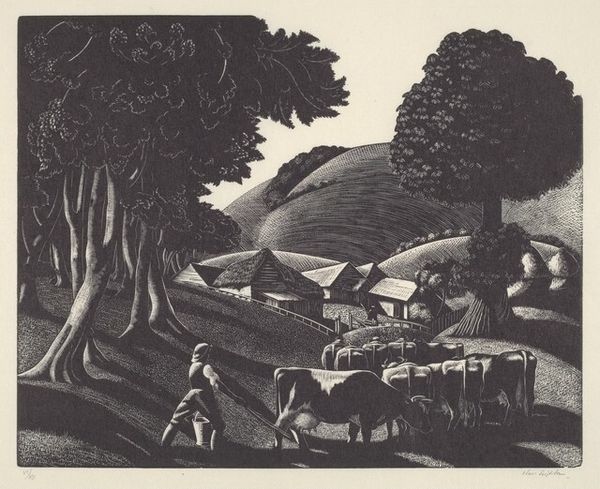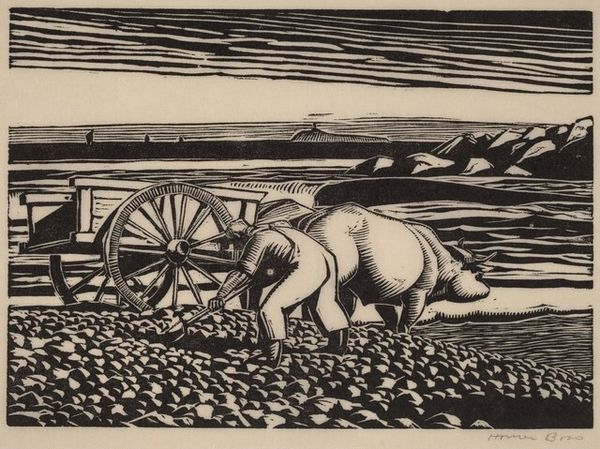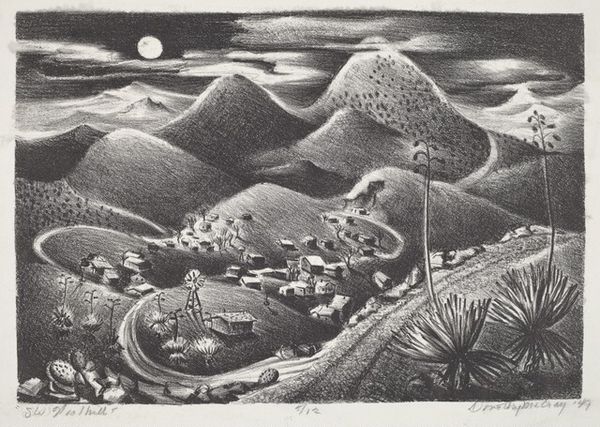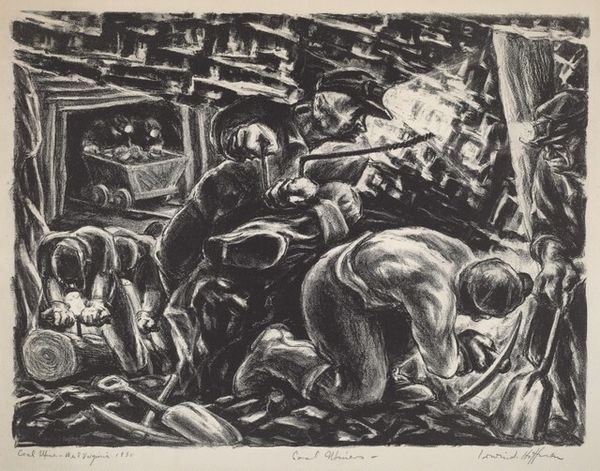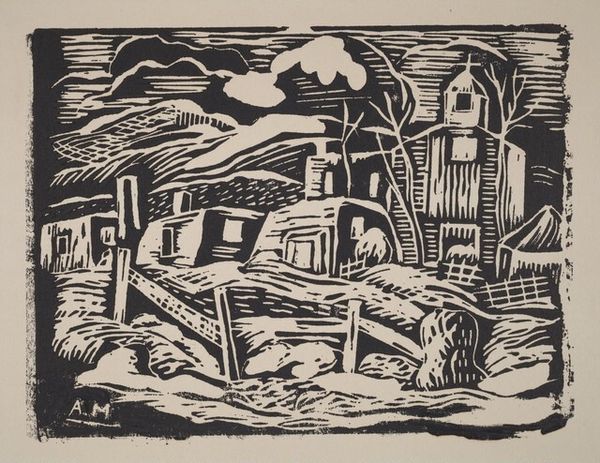
#
quirky illustration
#
shading to add clarity
# print
#
pencil sketch
#
old engraving style
#
caricature
#
cartoon sketch
#
limited contrast and shading
#
surrealism
#
cartoon style
#
cartoon carciture
Dimensions: image: 20.3 × 26.7 cm (8 × 10 1/2 in.) sheet: 27.9 × 37.5 cm (11 × 14 3/4 in.)
Copyright: National Gallery of Art: CC0 1.0
Curator: Lambing, a print created by Clare Leighton in 1932, offers a glimpse into rural life. It immediately strikes me as quite industrious. The black and white is beautifully detailed with light and dark shadows adding clarity. What are your initial thoughts? Editor: It evokes a stark, almost documentary feel. I’m immediately drawn to the texture created by the medium itself. You can almost feel the roughness of the wool and the earthiness of the farmyard. I would guess the material is wood, which would add to the effect and align with the working classes depiction in the piece. Curator: Precisely! Leighton was deeply engaged with depictions of labor, and wood engraving, as a medium, allowed for the wide dissemination of images to a mass audience during this period. Prints were far more accessible, bringing art to the public sphere, reflecting her social ideals. The act of labor itself, the process of creating these pastoral images, becomes central. Editor: Absolutely. And if we think about the social context, the 1930s, during a period of economic depression… this image can be viewed as an idealization of rural life. It is showing a world removed from the harsh realities that were taking place within those decades. It presents a nostalgic view of pastoral England at that time, even perhaps offering a sense of hope. Curator: Yes, but there is also something more complex at play. Notice the emphasis on the hand-worked nature of the print itself and then compare it with the way lambing is presented as an ongoing endeavor, which can also be argued as an important social context consideration, given it shows how the means of agricultural production was developing during this time. It celebrates the workers and animals that contribute to our environment, as a reminder of simpler times. Editor: I concur that it is a nostalgic perspective, that could potentially challenge the societal shifts of the time, with urbanization rapidly increasing at the time. And a question comes to mind; What were Leighton's feelings for London when producing this? Curator: Ultimately, this print invites us to consider not only the depicted scene, but also the labor involved in both the subject of the work and the material means of production itself and encourages us to be aware of its social context, when it was created and consumed. Editor: And how institutions and social commentary shaped, and continues to shape, how we receive this scene from rural England.
Comments
No comments
Be the first to comment and join the conversation on the ultimate creative platform.

